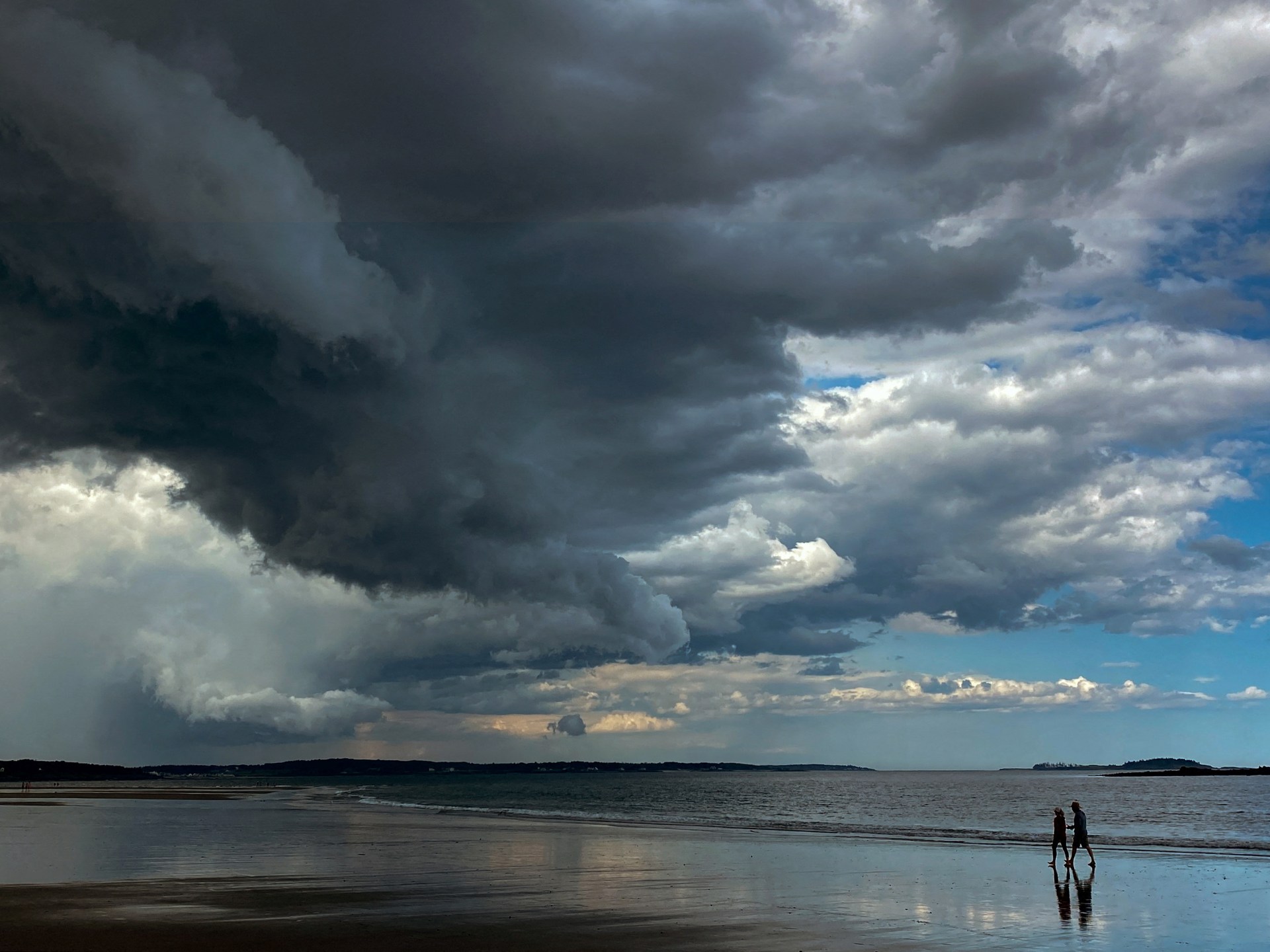- cross-posted to:
- science@beehaw.org
- cross-posted to:
- science@beehaw.org
Researchers in Japan have confirmed that microplastics are present in clouds, where they are likely affecting the climate in ways that are not yet fully understood.
In a study published in the journal Environmental Chemistry Letters, Japanese scientists climbed Mount Fuji and Mount Oyama in order to collect water from the mists that shroud the peaks, then applied advanced imaging techniques to the samples to determine their physical and chemical properties.
end of list
The team identified nine different types of polymers and one type of rubber in the airborne microplastics, which ranged in size from 7.1 to 94.6 micrometres.
Each litre (0.26 gallon) of cloud water tested contained between 6.7 to 13.9 pieces of the plastics.
“If the issue of ‘plastic air pollution’ is not addressed proactively, climate change and ecological risks may become a reality, causing irreversible and serious environmental damage in the future,” lead author of the research, Hiroshi Okochi of Waseda University, warned in a statement on Wednesday.
When microplastics reach the upper atmosphere and are exposed to ultraviolet radiation from sunlight, they degrade, contributing to greenhouse gasses, Okochi said.
Microplastics – which are defined as plastic particles under 5 millimetres that come from industrial effluent, textiles, synthetic car tires, personal care products and other sources – have already been discovered inside fish, peppering Arctic sea ice, and in the snows on the Pyrenees mountains between France and Spain.
However, the mechanisms of their transport to such varied locations had remained unclear, with research on airborne microplastic transport in particular being limited.
“To the best of our knowledge, this is the first report on airborne microplastics in cloud water,” the authors wrote in their paper.
Waseda University said in a statement on Wednesday that research shows that “microplastics are ingested or inhaled by humans and animals alike and have been detected in multiple organs such as lung, heart, blood, placenta, and faeces”.
“Ten million tons of these plastic bits end up in the ocean, released with the ocean spray, and find their way into the atmosphere. This implies that microplastics may have become an essential component of clouds, contaminating nearly everything we eat and drink via ‘plastic rainfall’”, the university said in announcing the new research findings.
Emerging evidence has linked microplastics to a range of effects on heart and lung health, as well as cancers, in addition to widespread environmental harm.



This would be a great plot for a movie. The organisms thrive on our pollution but in a sad twist of fate produce gas that we are unable to tolerate and all die off
It was mentioned in the novel “Ringworld” which was written in 1970. (Spoilers for a 53 year old book) One of the characters postulates that a bacteria could have evolved to eat room-temperature superconductors on the Ringworld. Another charachter replies that something similar had taken place on Earth, where a bacteria evolved to eat polystyrene.
Microbes are incredibly versatile. If it’s even remotely possible to extract energy or nutrients from something, there’s a species for it. Too much salt for you? No problem for halophiles. Not enough air? No problem for the anaerobes. Too hot or too cold? Thermophiles and psychrophiles can handle it. Not enough nitrogen? Just pull it from the air! Oh, you need carbon too? Who needs glucose, when there’s CO2 in the air. Some even pull their energy from the oxidation reactions of arsene, sulfur or pretty much any element you can find on earth.
That’s impressive foresight/imagination, I’ll have to check it out. ty
There are three books that pertain directly to the Ringworld itself, and a couple others that mention it or use it as a sort of background plot device. The ringworld trilogy would be “Ringworld”, folkowed by “Ringworld Engineers” and “Ringworld’s Children” all written by Larry Niven. The idea is probably better than the books, I didn’t think they were the best Known Space books.
Isn’t that kinda already the case? We are going to die if we keep accumilating plastic in our bodies
If evolution has taught me anything there will be probably be a section of the population who will become tolerant to microplastics. Perhaps already started. Also, perhaps those who are accumulating the most, who will come to evolve with it, are showing signs of low IQ /cognitive decline. As a result, they reinforce the accumulation of microplastics via lifestyle/decisions, further propagating the cycle. Hmm, perhaps this explains Trump and his supporters. Sorry, hate to make this political, but I couldn’t help myself. This would explain though our continued decline into Idiocracy.
deleted by creator